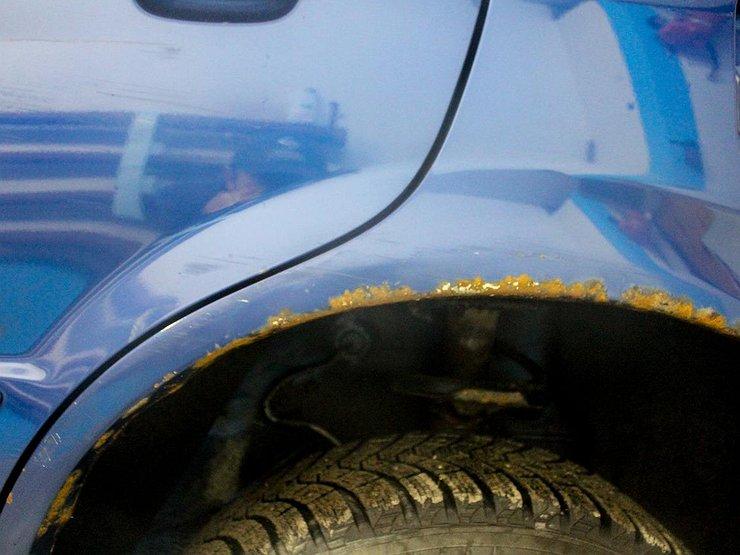
Repair of equipment. money and image
Content
The slogan "No more repairs" is probably best known to new car owners. Over the past two decades, their ability to relatively easily repair and replace, for example, light bulbs in traffic lights, has consistently and inexorably declined. Repair options other than authorized workshops are also increasingly limited.
Repairing equipment such as computers and more recently smartphones and tablets has always been fun for the advanced. However, in recent years, even relatively simple activities such as camera battery replacementA decade ago, producers prevented a completely routine and obvious thing. Many new devices cannot be opened easily and without risk, and the batteries are permanently connected to the device.
Manufacturers cannot deny that the equipment inside is complex and delicate, and that the owner is convinced that he can handle it and not cause additional, more serious damage is already too much. postponing issues related to the warranty and release of the manufacturer from liability for repairs carried out by users themselves, modern electronics sometimes use such space technology, as, for example, in flat-screen TVs, it's hard to imagine that a craftsman with a screwdriver and pliers could do anything other than accidentally break.
Once upon a time, RTV stores, where TVs and radios were sold, were also repair points for this equipment (1). The ability to identify a broken vacuum tube or resistor and replace those components effectively was valued and made some money from time to time.
1. Old electronics repair shop
The right to repair is an inalienable human right!
With all reservations about complications modern equipment, there are many people who believe, contrary to the manufacturers, that its repair (more precisely, an attempt to repair) is an inalienable human right. In the US, such as California, there has been a campaign for several years to introduce "Right to Repair" legislation, a major part of which will require smartphone manufacturers to provide consumers with information about repair options and spare parts. The State of California is not alone in these initiatives. Other US states also want or have already passed such a law.
“The Right to Repair Act will give consumers the freedom to have their electronic equipment and devices freely repaired by a repair shop or other service provider of the owner's choice and discretion. This is a practice that was evident a generation ago but is now becoming increasingly rare in a world of planned obsolescence,” she said in March 2018 during her first presentation of the bill. Susan Thalamantes Eggman, member of the California State Assembly. Mark Murray of Californians Against Waste echoed her, adding that smartphone and appliance makers profit "off our environment and our wallets."
Some US states began introducing repair rights as early as 2017. There even arose Public Movement “Right to Repair” (2), the strength of which grew in direct proportion to the intensity of the fight against this law by technology companies, primarily Apple.
The right to repair is actively supported by major repair networks such as iFixit, many independent repair shops, and consumer advocacy groups, including the renowned Electronic Frontier Foundation.
2. Stream symbol Right to repair
Manufacturers do not want to be held responsible for homegrown craftsmen
The first argument of Apple lobbyists against the repair was an appeal to user safety. According to this company, the introduction of the “Right to Repair” creates, cybercriminals and all those who have bad intentions in the network and in information systems.
In the spring of 2019, Apple used another batch of arguments from California lawmakers against the "right to repair." Namely, consumers can harm themselves by trying to fix their devices. California is a densely populated, large and prosperous state with a huge volume of Apple sales. No wonder Apple lobbied and lobbied so hard there.
It appears that companies fighting for the right to repair have already abandoned the argument that repair tools and basic equipment information are company intellectual property in favor of raising concerns about the safety of products being repaired by independent workshops or untrained people.
It should be recognized that these fears are not unfounded. Some devices can be dangerous if you try to repair them ineptly without proper training and knowledge. From automotive companies to electronics manufacturers to agricultural equipment manufacturers (John Deere is one of the most vocal anti-repair lobbyists), companies worry about possible future lawsuits if someone not authorized by the manufacturer messes with equipment that could, for example, explode and injure. someone.
Another thing is that in the case of the most advanced electronics, i.e. Apple devicesrepair is very difficult. They contain many miniature elements, components that are not found in other equipment, a tangle of record-breaking thin wires and a large amount of glue (3). The aforementioned iFixit repair service has been giving Apple products one of the lowest "repairability" scores for years. However, this does not stop thousands of small, independent and, of course, non-Apple authorized repair shops. This is a profitable business because the equipment is expensive, so it is usually profitable to repair it.
The fight is still ahead
The history of the struggle for the "right to repair" in the United States has not yet ended. In May of this year, the Bloomberg website published an extensive material, which reported not only on the lobbying efforts of Apple, but also on Microsoftu, Amazona i Googleto prevent "Right to Repair" in a version that would require technology companies to provide original parts and provide hardware schematics to independent repairers.
The battle for repair legislation is now underway in more than half of the US states. The fate of legislative proposals may be different. Laws are passed in one place, not in another. Initiatives of this kind are everywhere, and sometimes very cruel lobbying.
The most active company is Apple, which sometimes even has constructive suggestions when it comes to right to repair. For example, it launched a global independent repair program designed to provide non-Apple Authorized Service Providers with original parts, tools, repair and diagnostic manuals for out-of-warranty repair of Apple devices. The program is free, but there is one catch - repairs must be carried out by certified Apple specialists, which is an insurmountable barrier for many repair shops.
of course technological tycoons it's all about the money. Much more than repairing old equipment, they are interested in replacing it with new equipment as often as possible. Some independent workshops would have too little potential in this war, but for some time now they have a powerful ally - people and organizations seeking to reduce waste and thereby increase the level of environmental protection.
The manufacturers' front fights first of all not to be held responsible for the consequences of a home-grown "repair". But it's not only that. For companies with a strong brand and a consistently high level of image, it is important that the "refurbished" in an unsuccessful way does not represent and does not spoil the brand image, developed at great cost over many years of work. Hence such a fierce struggle, especially Apple, which has been mentioned here more than once.

